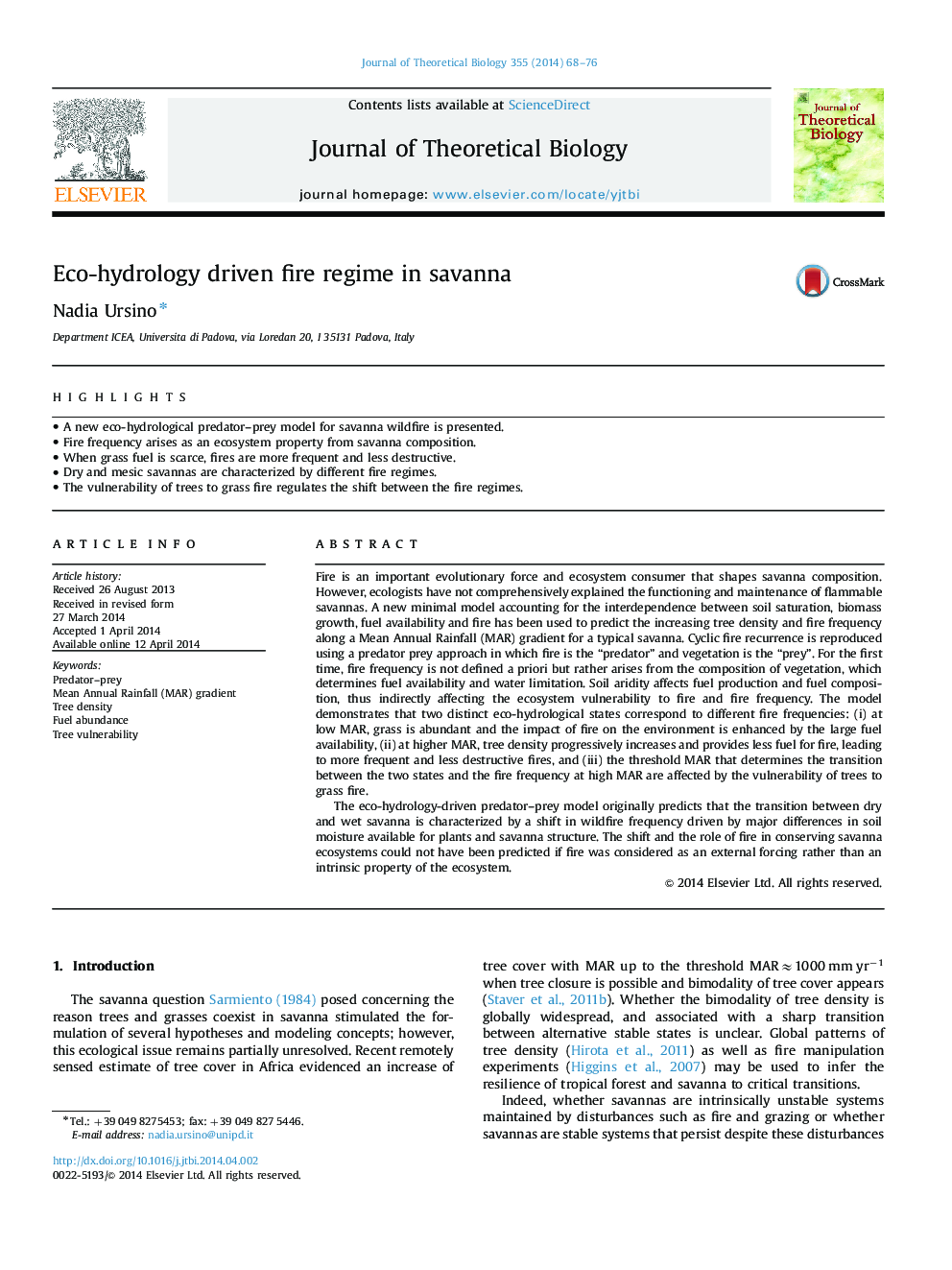| کد مقاله | کد نشریه | سال انتشار | مقاله انگلیسی | نسخه تمام متن |
|---|---|---|---|---|
| 6370474 | 1623855 | 2014 | 9 صفحه PDF | دانلود رایگان |
- A new eco-hydrological predator-prey model for savanna wildfire is presented.
- Fire frequency arises as an ecosystem property from savanna composition.
- When grass fuel is scarce, fires are more frequent and less destructive.
- Dry and mesic savannas are characterized by different fire regimes.
- The vulnerability of trees to grass fire regulates the shift between the fire regimes.
Fire is an important evolutionary force and ecosystem consumer that shapes savanna composition. However, ecologists have not comprehensively explained the functioning and maintenance of flammable savannas. A new minimal model accounting for the interdependence between soil saturation, biomass growth, fuel availability and fire has been used to predict the increasing tree density and fire frequency along a Mean Annual Rainfall (MAR) gradient for a typical savanna. Cyclic fire recurrence is reproduced using a predator prey approach in which fire is the “predator” and vegetation is the “prey”. For the first time, fire frequency is not defined a priori but rather arises from the composition of vegetation, which determines fuel availability and water limitation. Soil aridity affects fuel production and fuel composition, thus indirectly affecting the ecosystem vulnerability to fire and fire frequency. The model demonstrates that two distinct eco-hydrological states correspond to different fire frequencies: (i) at low MAR, grass is abundant and the impact of fire on the environment is enhanced by the large fuel availability, (ii) at higher MAR, tree density progressively increases and provides less fuel for fire, leading to more frequent and less destructive fires, and (iii) the threshold MAR that determines the transition between the two states and the fire frequency at high MAR are affected by the vulnerability of trees to grass fire.The eco-hydrology-driven predator-prey model originally predicts that the transition between dry and wet savanna is characterized by a shift in wildfire frequency driven by major differences in soil moisture available for plants and savanna structure. The shift and the role of fire in conserving savanna ecosystems could not have been predicted if fire was considered as an external forcing rather than an intrinsic property of the ecosystem.
Journal: Journal of Theoretical Biology - Volume 355, 21 August 2014, Pages 68-76
